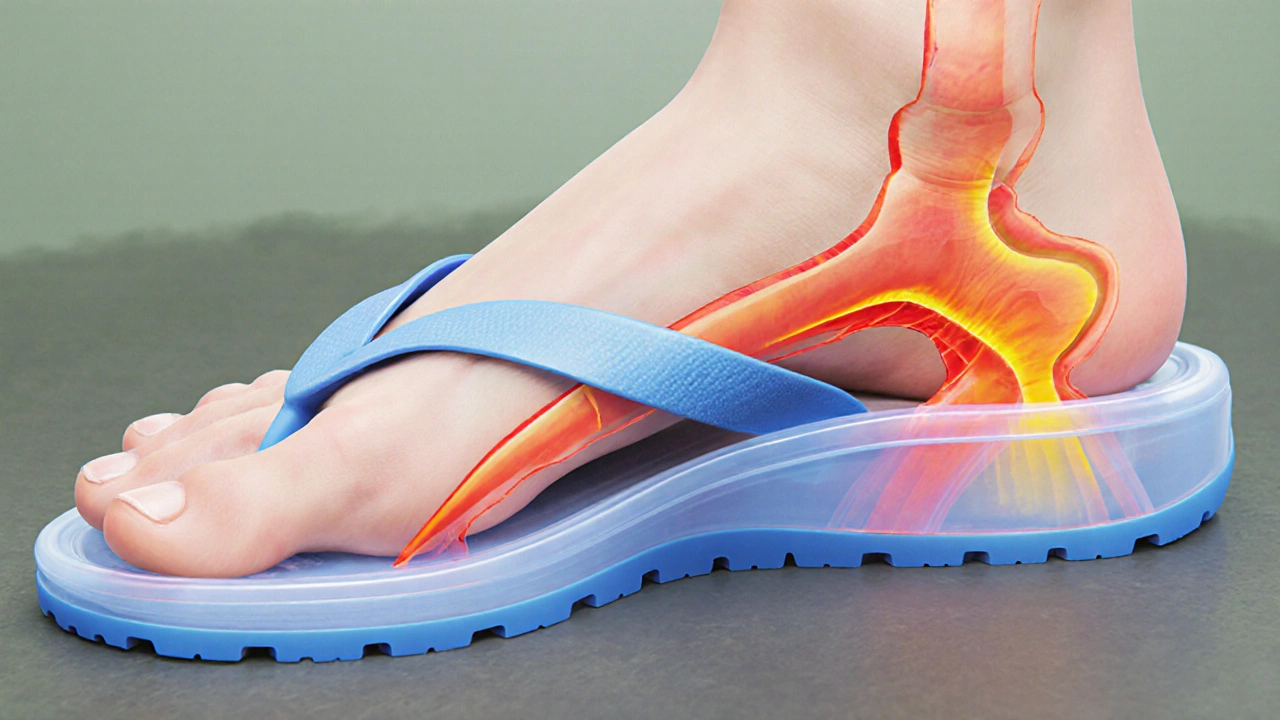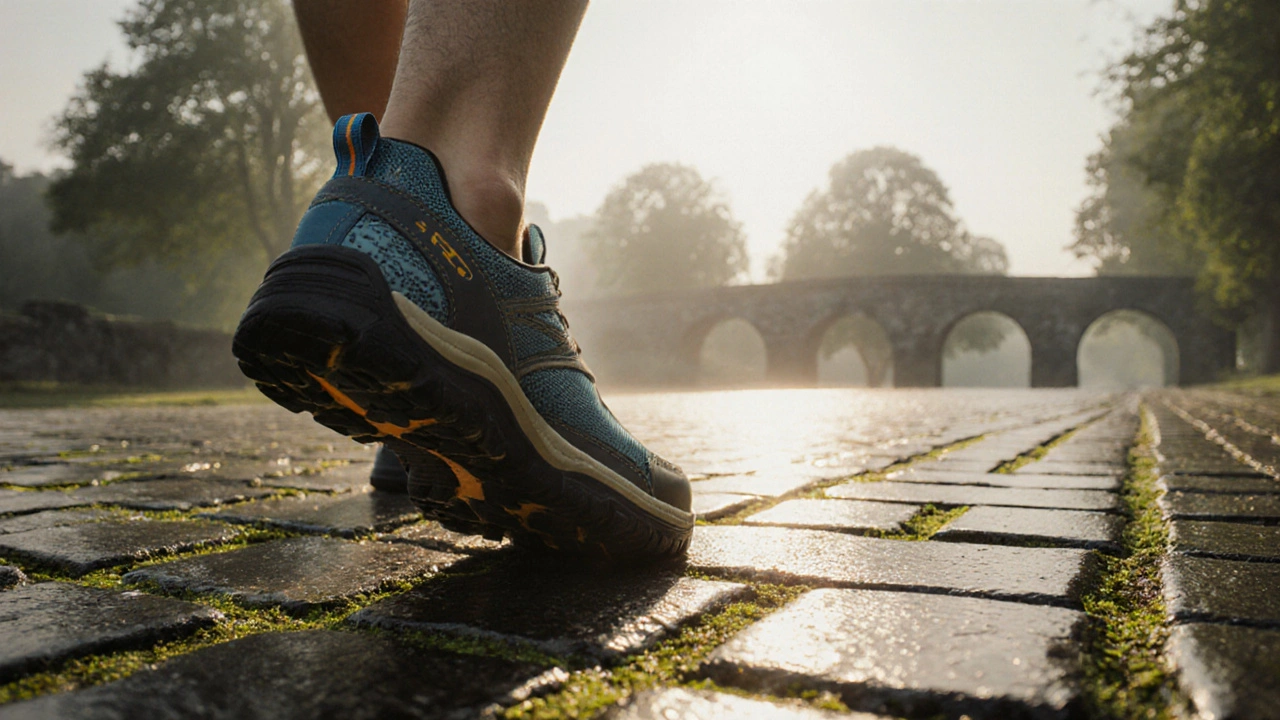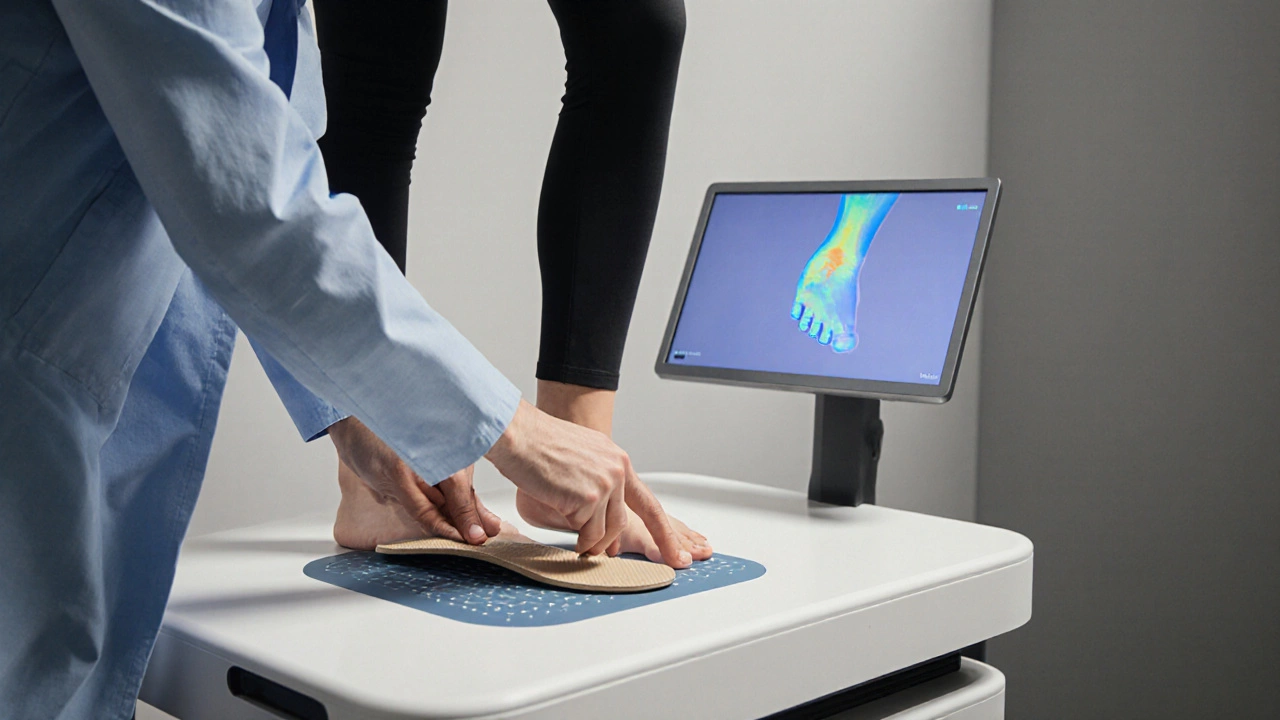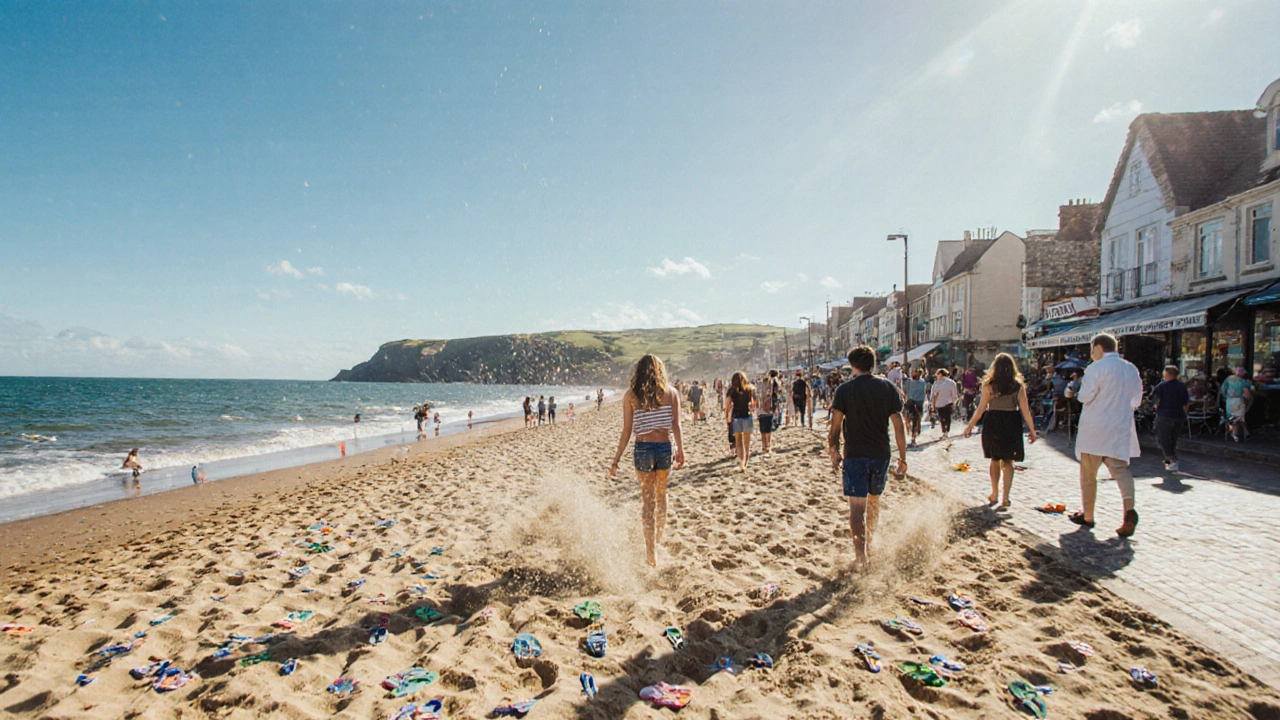When you wander the promenade at Sandymount or the cliffs of the Wild Atlantic Way in midsummer, you’ll spot a sea of flip‑flops easy‑on, thong‑style sandals that leave the foot largely unsupported kicking up sand. They feel breezy, cheap and perfect for a quick trip to the shop for a pint. Yet behind the carefree vibe, Ireland’s podiatrists are ringing alarm bells. They warn that the casual appeal of these sandals can mask serious foot‑health risks, especially when the Irish weather swings from sunny to soggy in a single afternoon.
What podiatrists see when you slip on flip‑flops
Podiatrists foot‑health specialists trained to diagnose and treat problems of the lower limb in Dublin, Cork and Galway all note the same pattern: a rise in heel pain, arch collapse and ankle strain during the warm months. Their clinics - such as the Dublin Foot Clinic a leading private practice offering gait analysis and custom orthotics - report a spike in appointments for plantar fasciitis inflammation of the thick band of tissue that runs along the bottom of the foot from May through September.
The anatomy of a flip‑flop and where it fails
Unlike a proper shoe, a flip‑flop typically consists of three parts: a thin sole, a Y‑shaped strap that slides between the first and second toes, and a heel that offers virtually no lift. The design creates three main problems:
- Lack of arch support - the foot’s arch collapses because there’s nothing to hold it up.
- Uncontrolled toe splay - the strap forces the big toe into an unnatural position, stressing the metatarsophalangeal joint.
- Heel instability - each step lands directly on the heel’s edge, increasing impact forces up to 30 % more than a cushioned shoe.
These issues compound when you add the soft, often wet Irish ground. The combination of Irish weather a climate of frequent rain, humidity and sudden temperature changes and the bare‑foot feel of flip‑flops means the foot must work harder to stay stable.

Common foot problems Irish summer walkers face
Because of the design flaws, the following conditions show up more often during the Irish summer:
- Bunions bony protrusions at the base of the big toe caused by chronic pressure - the Y‑strap pushes the big toe outward.
- Flat feet a condition where the arch collapses, often leading to pain in the heel and lower back - lack of arch support accelerates the flattening.
- Achilles‑tendon strain - the heel’s thin edge forces the tendon to stretch with each step.
- Swelling of the forefoot - the open design encourages water retention after a rainy walk along the Cliffs of Moher.
All of these can turn a pleasant day out into a painful experience that lingers for weeks.
Why Irish weather makes flip‑flops riskier
Rain is a constant companion in the Emerald Isle. When the ground is damp, the friction under a thin sole drops dramatically. That means your foot slides more easily, forcing the ankle muscles to compensate. Over time, this can cause:
- Increased risk of ankle sprains, especially on the uneven cobblestones of Temple Bar.
- Exacerbation of existing gait abnormalities irregular walking patterns that put uneven stress on the feet and knees, which the podiatrist can spot during a gait analysis.
Even on a sunny day, the Irish sea breeze can make the sand or grass slick, turning a simple stroll into a hazard if you’re wearing flip‑flops.

Better alternatives for work and leisure in Ireland
If you love the freedom of an open shoe but need protection, consider these safer options that still suit the Irish summer:
| Feature | Flip‑flops | Supportive Summer Shoes |
|---|---|---|
| Arch support | None | Integrated arch‑support footbed (e.g., Clarks Un Costa) |
| Heel cushioning | Thin sole | EVA or gel midsole |
| Toe strap pressure | Y‑strap squeezes toes | Closed toe or breathable mesh |
| Water resistance | Usually good | Water‑repellent leather or canvas |
| Stability on wet surfaces | Poor | Non‑slip rubber outsole |
Brands that blend Irish style with proper support include Clarks a global shoe retailer with a strong presence in Irish high streets, Skechers known for memory‑foam insoles that reduce foot fatigue, and locally‑made Irish Leather Shoes craftsmen in County Cork offering hand‑stitched, breathable boots suitable for rainy days. These shoes keep you fresh on a stroll through Phoenix Park while still protecting your feet.

Tips to choose safer summer footwear for Ireland
- Look for a contoured arch‑support footbed - even a modest raise can prevent the arch from collapsing.
- Choose a shoe with a firm heel counter; it limits excessive heel motion on wet cobblestones.
- Prefer breathable mesh or quick‑dry fabrics - they dry fast after an unexpected drizzle.
- Check the outsole material; rubber with a multidirectional tread offers the best grip on moss‑covered stones.
- Fit matters - a shoe that slides forward will increase forefoot strain.
When you’ve found a pair that checks these boxes, you’ll notice a difference in flip-flops foot health on the very first walk along the River Liffey.
When to see a podiatrist in Ireland
If you experience any of the following after a day in flip‑flops, book an appointment at a local practice such as Cork Podiatry Centre offers custom orthotics and gait assessments for residents of Munster:
- Persistent heel or arch pain lasting more than three days.
- Swelling that doesn’t subside after resting and elevating the foot.
- Visible changes in toe alignment, such as the development of a bunion.
- Difficulty walking on uneven surfaces like the stone paths of Glendalough.
Early intervention can prevent chronic issues that could keep you off the beaches of County Kerry for years to come.
Are there any flip‑flops designed for foot health?
Some brands offer orthotic‑friendly flip‑flops with built‑in arch pads, like Vionic or OOFOS, but they still lack the heel stability podiatrists recommend.
Can I wear flip‑flops at work in Ireland?
Most workplaces, especially those with health‑and‑safety policies, require closed‑toe shoes with adequate support. Even in informal settings, a sturdier summer shoe is safer.
How often should I replace my summer shoes?
If the midsole is compressed or the outsole shows wear, replace them. Typically every 6‑12 months for regular summer wear in the Irish climate.
What simple exercises can help counteract flip‑flop damage?
Toe curls, calf stretches, and short‑foot exercises strengthen the arch and improve balance-great for after a beach walk.
Is it ever safe to wear flip‑flops in the rain?
If the surface is flat and dry, a short walk is fine, but slippery cobblestones or grassy paths are risky. Opt for a shoe with a non‑slip sole.
